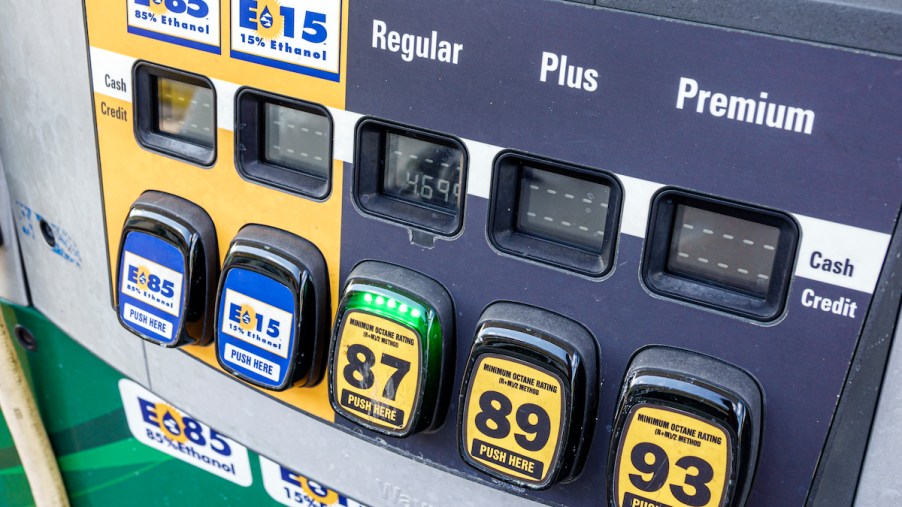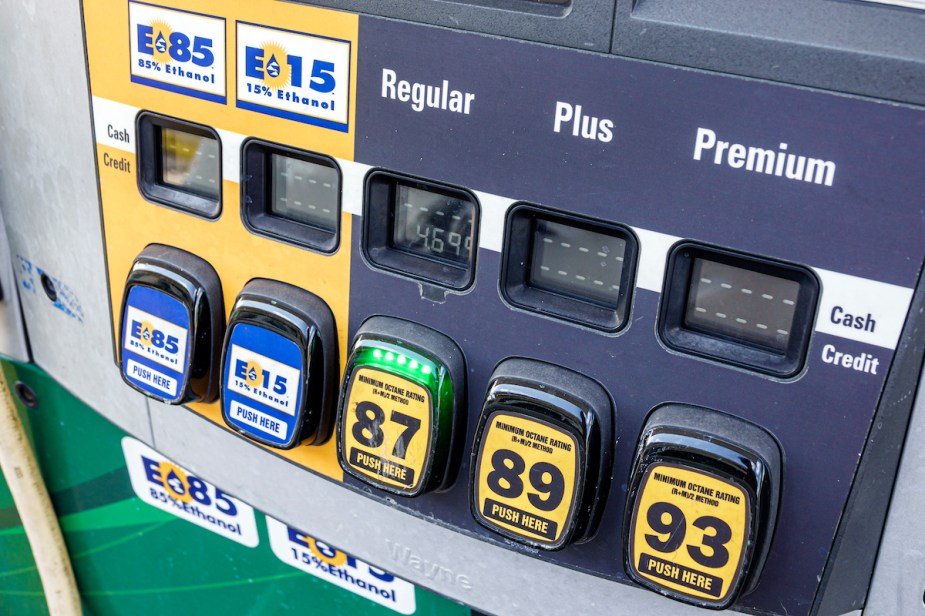
What Is E15 Gas, and Is It Safe to Use in Your Car?
It’s routine for millions of Americans to fill up at a gas station with various forms of gasoline. However, there’s been some recent changes to many gas stations in the U.S. Nowadays, they carry E15 gasoline, which isn’t a fuel many Americans are familiar with. Here’s a look at what E15 gas is, how it’s different from regular gas, and whether it’s safe to use in your car or not.
What is E15 gas, and how it’s different from regular gas?

According to Consumer Reports, the name E15 indicates what it actually is. It’s gasoline mixed with ethanol, where ethanol represents about 15% of the finished product. Ethanol is a biofuel made from corn, which is the big difference between E15 gas and regular unleaded gas. Regular unleaded gas typically has some ethanol, but it’s usually less than 10% of the finished product.
Besides the difference in ethanol content, E15 contains unleaded gas. Another name for E15 is unleaded 88, and the 88 stands for the fuel’s octane rating. Regular unleaded gas has an 87 octane rating. This is another difference between the two fuel types, as higher octane fuels such as E15 can allow drivers to get more power from their engines. Another big difference between the two fuel types is that E15 gas tends to be cheaper than regular gas.
How to know if your car can use E15 gas or not
Thanks to government regulations from decades ago, your car can probably handle E15 gas. This is because those regulations have pushed automakers to make cars that can handle gas with ethanol contents in the 10 to 15% range. As a general rule of thumb, vehicles built after 2001 will probably be able to handle E15 gas just fine. This includes SUVs and trucks built after 2001.
Flexible-fuel vehicles should also be able to handle E15 just fine. Consumer Reports mentioned that this rule of thumb doesn’t apply to motorcycles, boats, heavy-duty trucks, or anything with a small engine. If you want to ensure your car can handle E15, then it doesn’t hurt to check the owner’s manual.
If your car was built before 2001, then it will probably still be able to handle E15 gas to a certain extent. The car wasn’t built for it, but one tank of E15 gas is unlikely to do much harm to the car. If you repeatedly fill one of these cars with E15 gas, it will probably affect it negatively.
The pros and cons of using E15 gas in a car
There are some clear advantages and disadvantages to E15 gas that folks should consider before filling up. Since ethanol is a biofuel derived from corn and America grows a lot of corn, the extra ethanol in E15 can act as a buffer to the ups and downs of oil prices. Ethanol also tends to burn cleaner, so even though it does pollute, it won’t pollute as much as a pure gas mixture.
There are the more apparent benefits of E15, which are its lower prices and its higher octane rating. That may push drivers toward E15, but there is a significant downside to E15 and ethanol in general. Ethanol is less energy dense than gas, so what that means is that E15 will probably get a worse fuel economy than gas. Of course, if you drive a car built before 2001, E15 shouldn’t be a long-term option.


